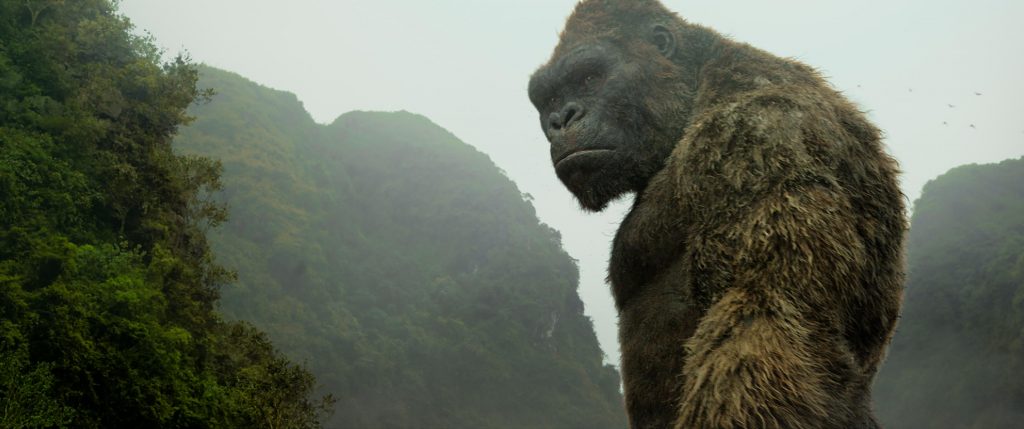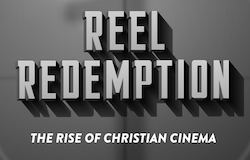King of the Wild Frontier, by Bob Connally
12 Mar
As film lovers we watch different movies for different reasons. Sometimes we need to laugh, sometimes we want to be challenged intellectually; sometimes we’re looking for something with strong emotional resonance. And sometimes we want to see a gigantic gorilla smash things. If you like movies where gigantic gorillas smash things (and why on earth wouldn’t you?) then Kong: Skull Island delivers what you’re looking for in spades.
In 1973, with President Nixon starting to bring troops home from Vietnam, Bill Randa (John Goodman), the head of a government organization named Monarch, is desperately seeking funding for an expedition to an island in the South Pacific. Without revealing the true nature of his reasons for the expedition, Randa is able to secure his funding as well as get a team of scientists and a military escort to join him. He also enlists the very expensive services of former British military officer turned mercenary, James Conrad (Tom Hiddleston). Anti-war photojournalist Mason Weaver (Brie Larson) sees the operation as suspicious and comes along to uncover the truth.
Written by Dan Gilroy (Nightcrawler), Max Borenstein (2014’s Godzilla), and Derek Connolly (Jurassic World), Kong: Skull Island is directed by Jordan Vogt-Roberts (The Kings of Summer). The filmmakers and cast all come to this film with the approach that they know that they’re making a silly, fun monster movie but they’re professionals who are going to take it seriously. They strike just the right tone and Vogt-Roberts has a firm handle on the pacing and he displays a strong talent for directing action scenes that are heavy on visual effects. The fight and chase sequences in the film are fun throughout which is hard to pull off in a movie like this. Usually at a certain point (often very early) they can become numbing, but that really isn’t a problem here.
Skull Island also helps itself by throwing in pinches and dashes of weirdness to keep us engaged at moments where it otherwise might have begun flagging. Some of these come in the action sequences but much of it is due to the performance of John C. Reilly as an American pilot named Marlow (a nod to Joseph Conrad’s Heart of Darkness) who has been stranded on the island since World War II.
Reilly has had an unusual career trajectory, going from starring in the early independent films of Paul Thomas Anderson to working alongside Will Ferrell in broad comedies, displaying a range of talent and a willingness to throw himself fully into everything he does that few actors possess. He utilizes his many gifts here as he’s somehow able to be the movie’s comic relief and its emotional center. That sounds like it should have been a bad choice on the part of the filmmakers but it works here because they know what they have in Reilly and he knows what to do with that opportunity. While Marlow is a man who has lost his marbles to an extent, living as a guest of the island natives for the past 29 years, all while avoiding death at the hands of the many terrifying island creatures, the movie wants you laughing with him rather than at him. It’s a subtle choice but it makes all the difference in the world. Nobody’s aiming for the resonance of Saving Private Ryan here, but you really do want to see Marlow make it back home.
Along with Marlow’s story, Skull Island also has a well-handled subplot involving Samuel L. Jackson’s Army Colonel Preston Packard. Viewing the withdrawal from Vietnam as “abandoning” the war rather than losing it, a fuse is lit in Packard by Kong’s destruction of his unit’s helicopters, killing a number of his men. Packard’s arc through the film is Ahab-like and Jackson plays it deliciously over the top. (He also gets a nice Jurassic Park reference in for good measure.)
More enjoyable than 2014’s Godzilla (which was still pretty good) and significantly superior to Jurassic World, Kong: Skull Island is the kind of fun, monster adventure movie you’re hoping it would be. It put a big smile on my face several times. Stay for the post-credits scene. It’s worth it.




No comments yet